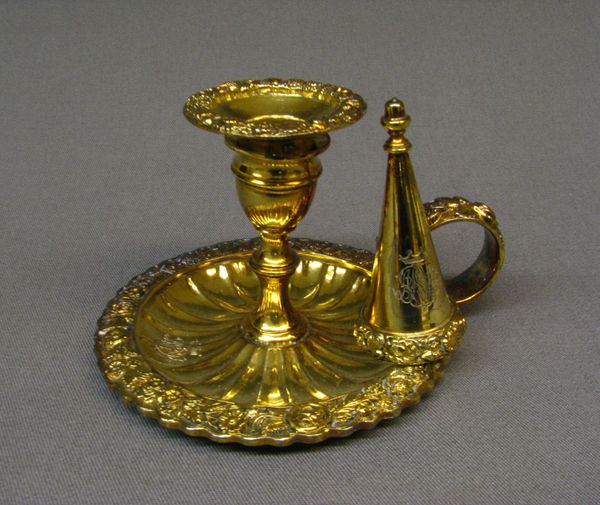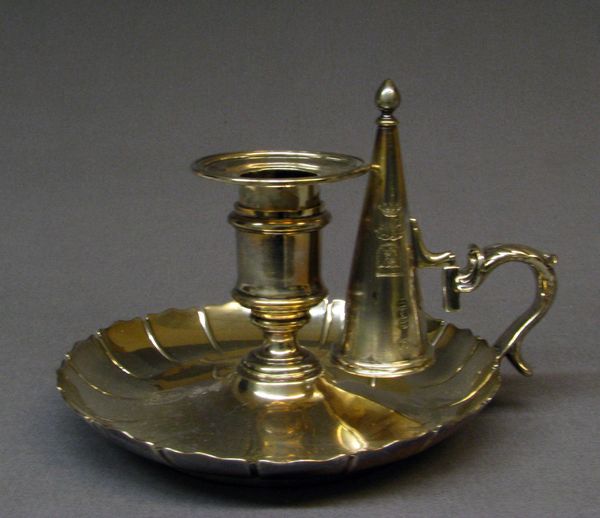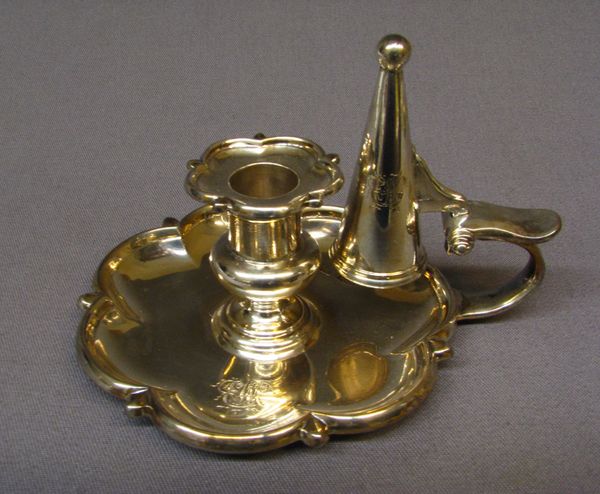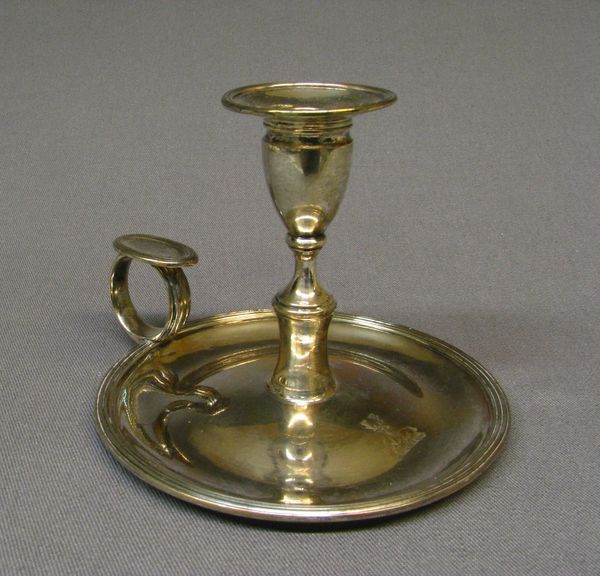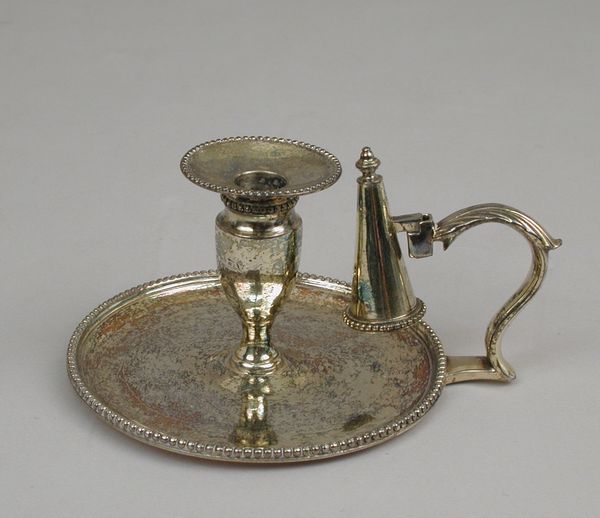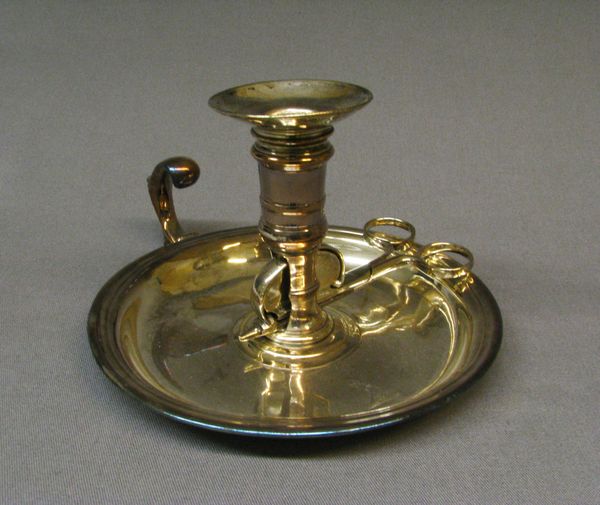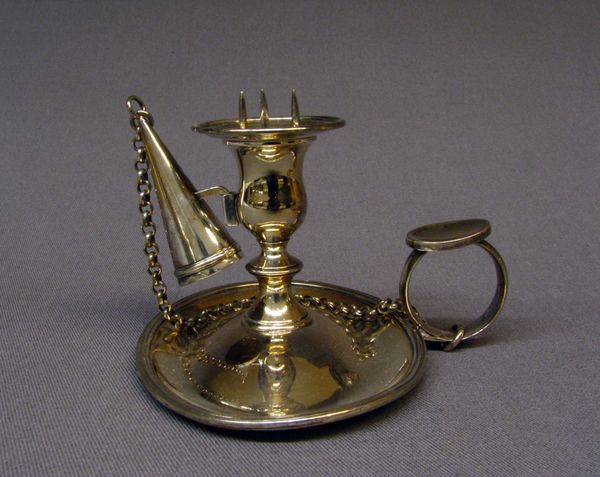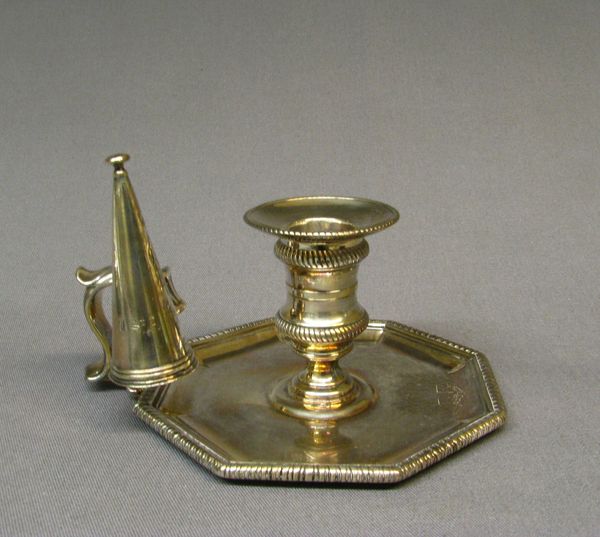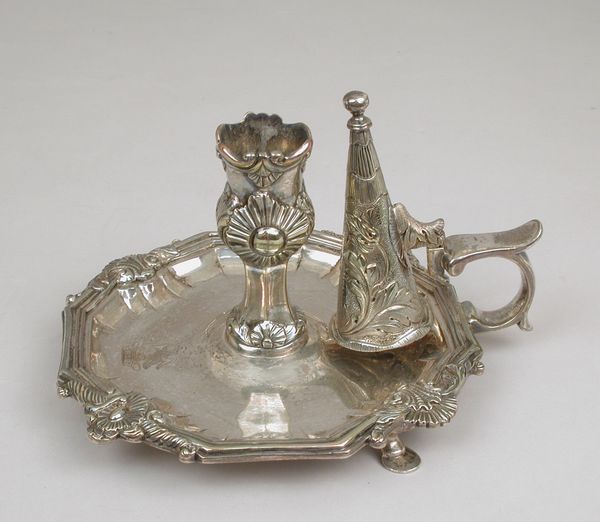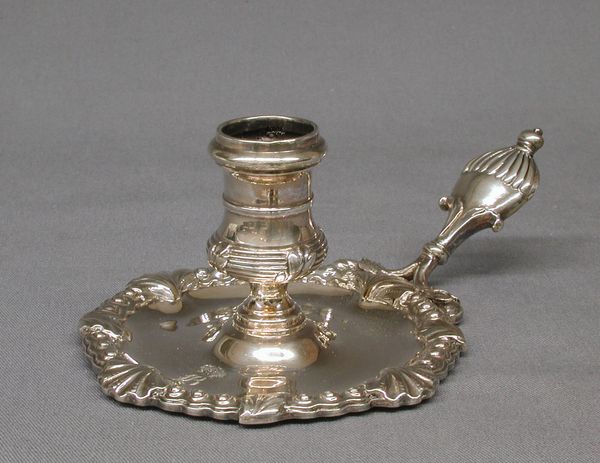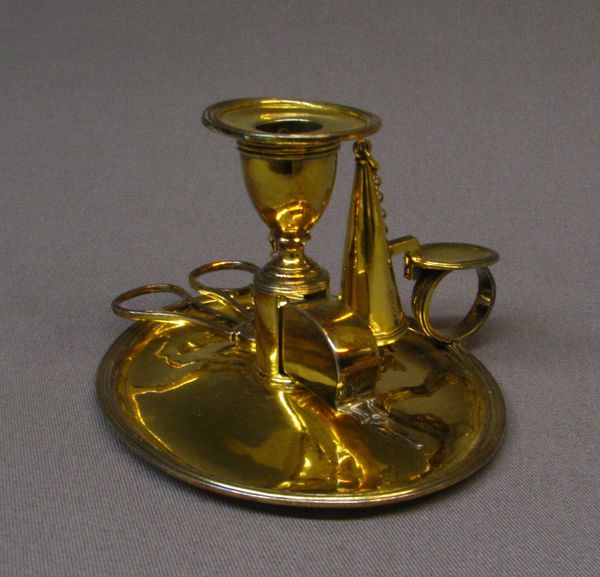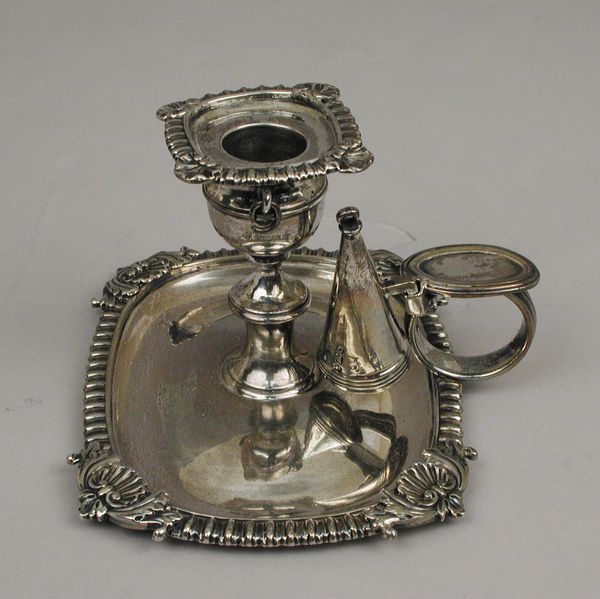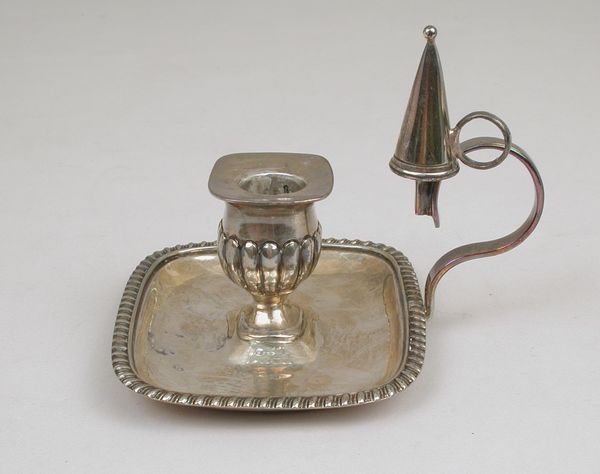
silver, metal, sculpture
#
neoclacissism
#
silver
#
metal
#
sculpture
#
decorative-art
Dimensions: Overall: 4 × 6 1/8 in. (10.2 × 15.6 cm)
Copyright: Public Domain
Curator: This object, created around 1817-18 by Rebecca Emes, is entitled "Chamber Candlestick." It's currently located at the Metropolitan Museum of Art. Editor: The first thing I notice is how compact everything is, almost like a little world rendered in gleaming silver. It certainly speaks of a life lived in close quarters, with both beauty and practicality on full display. Curator: It embodies the neoclassical aesthetic. Notice the clean lines and simplified forms—a visual vocabulary derived from antiquity. And it's all silver: handle, tray, and even little tools for tending to the flame, arranged thoughtfully on the piece's surface. Editor: But that careful arrangement—those shiny, miniature instruments, even the very choice of silver—whisper privilege. Light, in this context, isn't just illumination, it’s a commodity controlled and manipulated. Who gets access to it? Who is left in the dark? Curator: We see this manifested in the intricate chasing and embossing across the piece, which offer textural variety that contrast the stark gleam of the silver itself. The details speak volumes, like a language you could trace with your fingers. It showcases craftsmanship that’s so rare these days. Editor: Agreed, it’s beautiful, but it also speaks volumes about a time when wealth and class determined access to even basic comforts. Think about the social disparities that such a precious object represents. A small object can illuminate so much beyond itself. Curator: Absolutely, the Chamber Candlestick acts as an object whose form showcases the height of refinement, and as you mentioned, exposes tensions about ownership and availability that speak to hierarchies within society. It bridges the gap between function and aesthetic philosophy, bringing both discussions of form and social values to light. Editor: It really does ask the important questions, doesn't it? What kind of space did it exist in? How did it impact labor? Who benefitted, and who suffered? It can really turn up the heat, when it comes to investigating art from a distance!
Comments
No comments
Be the first to comment and join the conversation on the ultimate creative platform.
